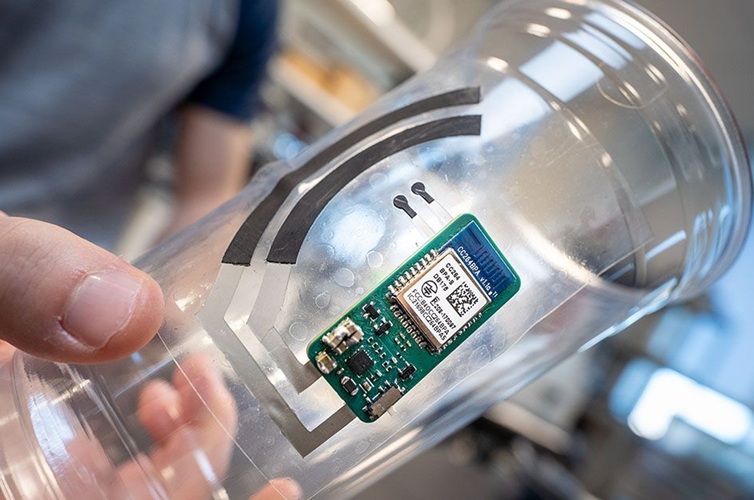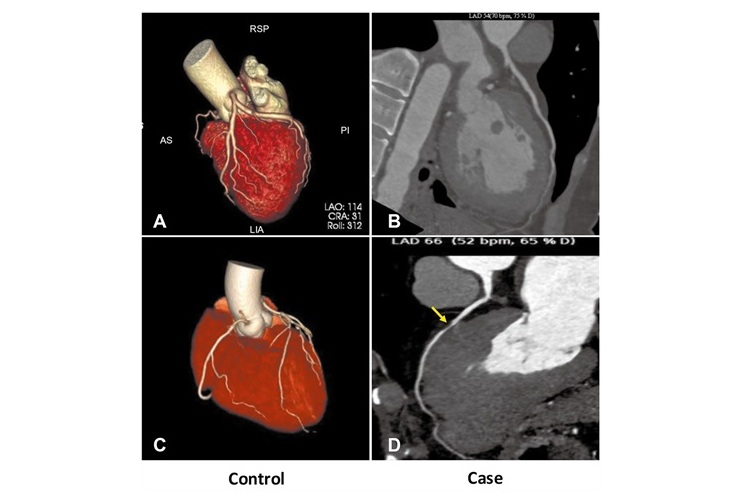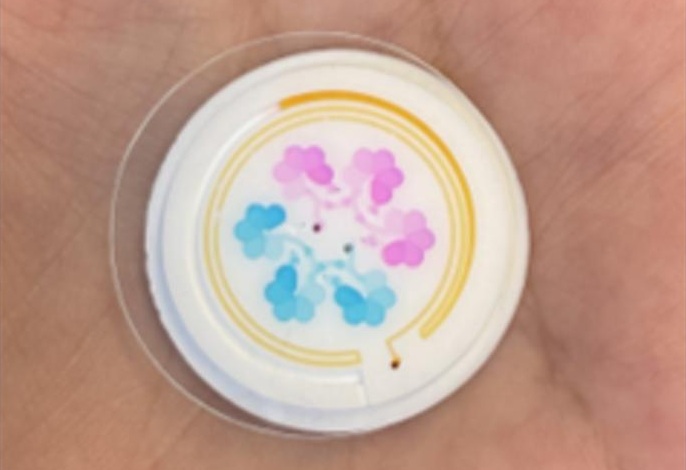Smartphone app Detects Neonatal Jaundice in Minutes
|
By HospiMedica International staff writers Posted on 16 Sep 2014 |

Image: The BiliCam app reporting that bilirubin levels are normal (Photo courtesy of the University of Washington).
A new smartphone app could serve as a screening tool to ascertain whether a baby needs a blood test to determine bilirubin levels.
The BiliCam app, developed by researchers at the University of Washington (UW, Seattle, USA), evaluates a newborns skin tone relative to an included color calibration card (to account for different lighting conditions and skin tones). After capturing the data using the smartphone camera, the photo is sent to the cloud, where it is analyzed by machine-learning algorithms. The report on the newborn’s estimated bilirubin levels is delivered within minutes to doctors and parents.
The UW researchers ran a clinical study with 100 newborns and their families at UW Medical Center, comparing the BiliCam to a standard blood test; the app performed as well as or better than the current screening tool. The researchers plan to test BiliCam on up to 1,000 additional newborns, especially those with darker skin pigments; the algorithms will then be robust enough to account for all ethnicities and skin colors. Though it would not replace a blood test, BiliCam could also become a useful tool in developing countries where jaundice accounts for many newborn deaths.
“Virtually every baby gets jaundiced, and we’re sending them home from the hospital even before bilirubin levels reach their peak,” said professor of pediatrics James Taylor, MD, medical director of the newborn nursery at UW Medical Center. “This smartphone test is really for babies in the first few days after they go home. A parent or health care provider can get an accurate picture of bilirubin to bridge the gap after leaving the hospital.”
“BiliCam would be a significantly cheaper and more accessible option than the existing reliable screening methods,” added Lilian de Greef, MSc, a UW doctoral student in computer science and engineering. “Lowering the access barrier to medical applications can have profound effects on patients, their caregivers, and their doctors, especially for something as prevalent as newborn jaundice.”
Neonatal jaundice is a yellowing of the skin and other tissues of a newborn infant as a result of a bilirubin level of more than 5 mg/dL. Jaundiced newborns have an apparent icteric sclera and yellowing of the face, extending down onto the chest. The condition affects 50%–60% of all babies in the first week of life. Prolonged hyperbilirubinemia can result into chronic bilirubin encephalopathy (kernicterus). Treatment includes phototherapy using a blue light at a wavelength of 420–448 nm, which oxidizes bilirubin to biliverdin.
Related Links:
University of Washington
The BiliCam app, developed by researchers at the University of Washington (UW, Seattle, USA), evaluates a newborns skin tone relative to an included color calibration card (to account for different lighting conditions and skin tones). After capturing the data using the smartphone camera, the photo is sent to the cloud, where it is analyzed by machine-learning algorithms. The report on the newborn’s estimated bilirubin levels is delivered within minutes to doctors and parents.
The UW researchers ran a clinical study with 100 newborns and their families at UW Medical Center, comparing the BiliCam to a standard blood test; the app performed as well as or better than the current screening tool. The researchers plan to test BiliCam on up to 1,000 additional newborns, especially those with darker skin pigments; the algorithms will then be robust enough to account for all ethnicities and skin colors. Though it would not replace a blood test, BiliCam could also become a useful tool in developing countries where jaundice accounts for many newborn deaths.
“Virtually every baby gets jaundiced, and we’re sending them home from the hospital even before bilirubin levels reach their peak,” said professor of pediatrics James Taylor, MD, medical director of the newborn nursery at UW Medical Center. “This smartphone test is really for babies in the first few days after they go home. A parent or health care provider can get an accurate picture of bilirubin to bridge the gap after leaving the hospital.”
“BiliCam would be a significantly cheaper and more accessible option than the existing reliable screening methods,” added Lilian de Greef, MSc, a UW doctoral student in computer science and engineering. “Lowering the access barrier to medical applications can have profound effects on patients, their caregivers, and their doctors, especially for something as prevalent as newborn jaundice.”
Neonatal jaundice is a yellowing of the skin and other tissues of a newborn infant as a result of a bilirubin level of more than 5 mg/dL. Jaundiced newborns have an apparent icteric sclera and yellowing of the face, extending down onto the chest. The condition affects 50%–60% of all babies in the first week of life. Prolonged hyperbilirubinemia can result into chronic bilirubin encephalopathy (kernicterus). Treatment includes phototherapy using a blue light at a wavelength of 420–448 nm, which oxidizes bilirubin to biliverdin.
Related Links:
University of Washington
Latest Critical Care News
- Coronary Artery Stenosis Could Protect Patients from Pulmonary Embolism Effects
- Sweat-Powered Sticker Turns Drinking Cup into Health Sensor
- Skin-Mounted 3D Microfluidic Device Analyzes Sweat for Real-Time Health Assessment
- New Therapeutic Brain Implants to Eliminate Need for Surgery
- Stem Cell Patch Gently Heals Damaged Hearts Without Open-Heart Surgery
- Biomaterial Vaccines to Make Implanted Orthopedic Devices Safer
- Deep Learning Model Predicts Sepsis Patients Likely to Benefit from Steroid Treatment
- Programmable Drug-Delivery Patch Promotes Healing and Regrowth After Heart Attack
- Breakthrough Ultrasound Technology Measures Blood Viscosity in Real Time
- Magnetically Activated Microscopic Robotic Swarms Could Deliver Medicine Inside Body
- Frequent ECG Use Can Identify Young People at Risk of Cardiac Arrest
- Ultrasound Controlled Artificial Muscles Pave Way for Soft Robots
- AI-Powered Alerts Reduce Kidney Complications After Heart Surgery
- Algorithm Predicts and Lengthens Pacemaker Battery Life
- Novel Pill Could Mimic Health Benefits of Bariatric Surgery
- AI Models Identify Patient Groups at Risk of Being Mistreated in Hospital ED
Channels
Critical Care
view channel
Sweat-Powered Sticker Turns Drinking Cup into Health Sensor
Micronutrient deficiencies affect millions worldwide, yet checking vitamin C levels still requires blood draws, lab equipment, and high costs that prevent regular monitoring. Most people only get annual... Read more
Coronary Artery Stenosis Could Protect Patients from Pulmonary Embolism Effects
Acute pulmonary embolism (PE) occurs when blood clots block vessels carrying deoxygenated blood from the heart to the lungs, triggering a sudden rise in pressure against the right ventricle and risking... Read moreSurgical Techniques
view channel
Drug-Coated Balloons Can Replace Stents Even in Larger Coronary Arteries
Narrowed or blocked arteries pose a major global health burden, often leading to heart attacks, heart failure, or stroke when blood flow becomes compromised. Traditional balloon angioplasty can reopen... Read more
Magnetic Kidney Stone Retrieval Device Outperforms Ureteroscopic Laser Lithotripsy
Kidney stone disease affects millions worldwide and often requires ureteroscopic laser lithotripsy, yet fragment removal remains inefficient. Many patients are left with residual pieces that can cause... Read more
Absorbable Skull Device Could Replace Traditional Metal Implants Used After Brain Surgery
Closing the skull safely after neurosurgery remains a major clinical challenge, as traditional metal or semi-absorbable fixation devices can interfere with imaging, degrade unpredictably, or persist long... Read morePatient Care
view channel
Revolutionary Automatic IV-Line Flushing Device to Enhance Infusion Care
More than 80% of in-hospital patients receive intravenous (IV) therapy. Every dose of IV medicine delivered in a small volume (<250 mL) infusion bag should be followed by subsequent flushing to ensure... Read more
VR Training Tool Combats Contamination of Portable Medical Equipment
Healthcare-associated infections (HAIs) impact one in every 31 patients, cause nearly 100,000 deaths each year, and cost USD 28.4 billion in direct medical expenses. Notably, up to 75% of these infections... Read more
Portable Biosensor Platform to Reduce Hospital-Acquired Infections
Approximately 4 million patients in the European Union acquire healthcare-associated infections (HAIs) or nosocomial infections each year, with around 37,000 deaths directly resulting from these infections,... Read moreFirst-Of-Its-Kind Portable Germicidal Light Technology Disinfects High-Touch Clinical Surfaces in Seconds
Reducing healthcare-acquired infections (HAIs) remains a pressing issue within global healthcare systems. In the United States alone, 1.7 million patients contract HAIs annually, leading to approximately... Read moreBusiness
view channel
Philips and Masimo Partner to Advance Patient Monitoring Measurement Technologies
Royal Philips (Amsterdam, Netherlands) and Masimo (Irvine, California, USA) have renewed their multi-year strategic collaboration, combining Philips’ expertise in patient monitoring with Masimo’s noninvasive... Read more
B. Braun Acquires Digital Microsurgery Company True Digital Surgery
The high-end microsurgery market in neurosurgery, spine, and ENT is undergoing a significant transformation. Traditional analog microscopes are giving way to digital exoscopes, which provide improved visualization,... Read more
CMEF 2025 to Promote Holistic and High-Quality Development of Medical and Health Industry
The 92nd China International Medical Equipment Fair (CMEF 2025) Autumn Exhibition is scheduled to be held from September 26 to 29 at the China Import and Export Fair Complex (Canton Fair Complex) in Guangzhou.... Read more













